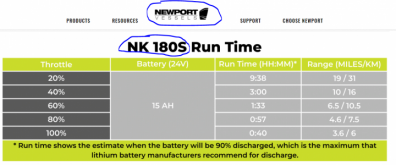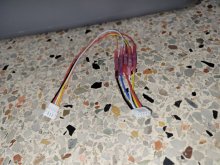great write up thank you! but not sure if that answered my question regarding why i cant just use a balance charger? what's the different between top balancing them in parallel at 3.6v and top balancing them at 28.8v in series with a balance charger?
Seems like you are determined to use your balance charger.
Which is fine.
The concept of top balancing still the same.
Here is something else I wrote on the subject.
Top balancing should be renamed to initial cell charging.
q: What is top balancing?
a: {
Top balancing is really just charging each cell until it is full.
We do this to ensure the capacity of the battery is equal to that of the weakest cell.
Which is as good as it gets.
}
q: What is bottom balancing?
a: {
Its not applicable to our application(low cost energy storage).
Google is your friend.
}
q: How should lifepo4 cells be prepared for use in a serial battery?
a: Charge each cell to precisely 3.625 volts as measured at the cell terminals.
q: What is a lifepo4 cell?
a: {
For the purpose of this writing a cell is an indiviual battery component.
Its minimum voltage is 2.5 volts.
Its nominal voltage is 3.2 volts.
Its maximum voltage is 3.65 volts.
NOTE: Always check the manufacturers documentation, there may be exceptions.
}
q: What is a lifepo4 battery?
a: {
For the purposes of this writing a lifepo4 battery is a collection of serially attached cells.
Typical configurations are 4s, 8s and 16s.
These configurations have nominal voltages of 12.8, 25.6 and 58.4 volts respectively.
The battery charge voltages are 14.6, 29.2 and 58.4 volts respectively.
NOTE: For the purposes of this writting a lifepo4 battery includes a bms.
}
q: What is the classic method for initial cell charging?
a: {
The classic method involves connecting cells in parralel and charging them as a large "logical" cell to 3.65 volts.
Parralel charging these huge cells with a typical bench charger takes a very long time.
Cells are usually delivered at aproximately 50% state of charge.
To parralel charge 16 cells for a 48 volt battery...
280 amp hours * .5 state of charge * 16 cells / 5 charge amps = 448 hours.
Cells have dramaticcally increased in capacity of the last few years but benchtop chargers have stayed relatively static.
}
q: What is your preferred method for accomplishing initial cell charging?
a: {
Assemble cells into a battery complete with bms.
Configure bms to disconnect when the first cell gets to 3.60 volts.
Charge at battery charge voltage until the bms disconnects the battery.
Wait overnight for the cells to settle.
With a bench charger set to ~5 amps and 3.65 volts charge each cell until it reaches 3.625 volts as measured at the cell terminals.
Be careful to stop the charge precisely at 3.625 volts.
NOTE: Don't leave this process un-attended for even a minute.
}
q: why is this your preferred method?
a: {
Like many on this forum, I'm using the big blue prismatic cells.
These cells are a great value but the terminals are usually tapped aluminum and prone to stripping.
I prefer to meticulously prepare all the battery hardware exactly once to minimize circuit resistance and wear&tear.
}
q: But wait, how do I charge individual cells that are already serial connected to form a battery?
a: {
Current flows from its origin to its polar opposite.
So just attach the charge leads via alligator clips to the cell's terminal posts such that the current goes through just that cell.
* a picture here would really be good.
}
q: Is it really that simple?
a: Yes.
q: Is there anything else I can do for bonus points?
a: Enable bms cell balancing but only during charge and only above float voltage.






